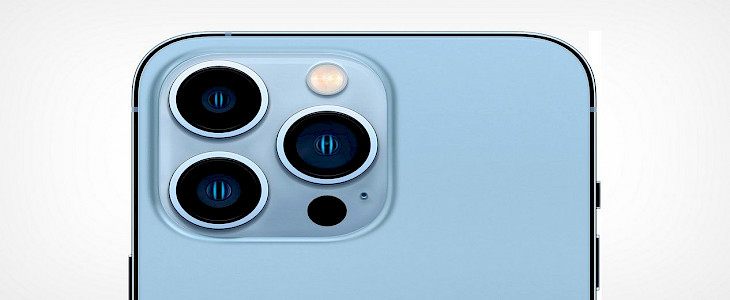
According to Apple, the camera module on iPhone 13 has been the most powerful and technically advanced setup ever designed by the company.
So, we felt this gives us the perfect opportunity to talk about this new and improved camera setup.
Thus, here we are...
Dual camera and sensor-shift stabilization.
The Apple iPhone 13 offers a similar camera setup to that of the iPhone 12's. There are two cameras with a resolution of 12MP on the back, and a 12MP selfie camera on the front. Its SL 3D scanner used for Face ID assists the Portrait mode when taking selfies.

There are two upgrades to the hardware as well as a few software upgrades available on the iPhone 13.
The camera that is the primary 12MP has been upgraded to a sensor that has larger pixels as well as the highest-end sensor-shift stabilization technology. The camera now has a bigger Sony sensor that has 1.7um of pixels (vs. 1.4um in the iPhone 12). iPhone 12). The lens is still identical - 26mm f/1.6 However, the stabilization is a different type. In place of the optical stabilizer, this camera uses sensor-shift stabilization. This means that the sensor is stabilized in real-time, not the lens, similar to the in-body stabilization, or IBIS, found on a lot of larger-sensor digital cameras.
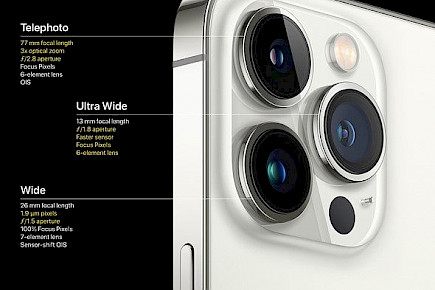
The camera on the secondary is similar to the one on the iPhone 12. It's an image of 12MP with 1.0um pixels and a 14mm f/2.4 lens for ultrawide shots. The focus is set and there's no stabilization.
The camera for selfies is taken straight off an iPhone 12. It features a 12MP sensor that has 1.0um pixels and a 23mm f/2.2 lens. The focus is fixed. If you are using the portrait mode, it records depth information using the 3D structured-light scanner, which means it will be taking impressive selfie portraits.
The three cameras support up to 4K @ 60fps video recording with Cinematic Stabilization and Extended Dynamic Range. Dolby Vision HDR video capture is available with all cameras across all modes. The brand-new Cinematic Mode works on the primary and selfie shooters only.
The Camera App
The viewfinder has been largely identical since iOS 13 and the iPhone 11 and you can observe outside the viewfinder because of the exact calibration of both cameras which allows you to see what is left out of the frame in real-time.
Its Apple image processing system includes the same features that were available in the past, including Smart HDR, Night Mode on all cameras, as well as Deep Fusion.
This Night Mode icon pops up whenever a low-light situation appears and it takes an unintentionally long-exposure picture, taken handheld. The duration of the shot is in the area next to the Night Mode icon, but when you tap it, you can alter the long exposure simulation or even disable it completely.
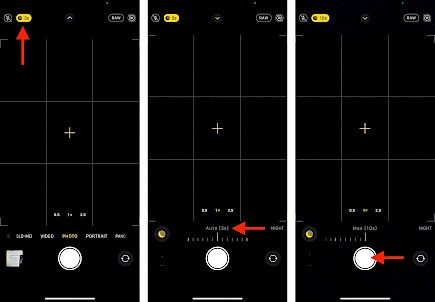
Usually, it's between 1 to 2 seconds, but occasionally, the phone permits you to extend it as long as 30 seconds based on the ambient light or absence. This model can be used on the main screen, ultrawide, or the selfie-snapper.
Deep Fusion is used when the lighting conditions aren't perfect, like indoors. It is activated rather than Smart HDR and Night Mode. Deep Fusion uses four frames before hitting the shutter, then four more after you hit the shutter, and one long exposure.
Its Neural engine will choose the most appropriate frames and then create the highest quality HDR photograph that's clear, detailed, and more natural. The Neural processor's machine learning algorithm analyses the image and then processes it differently based on the subject matter of the frame. For instance, the sky, foliage, and skin tone. In addition, the structure and color tones are based on the ratios that are calculated from the Neural unit of the CPU of A15.
As is the norm, all cameras communicate with one another, which means they know the right tones and exposure settings each time they switch between the two. This applies to stills as well as videos.
The camera's interface remains unaltered. You can swipe between modes and there are a few settings that can be accessed by swiping upwards-flash night mode live photo, aspect ratio, exposure compensation, and filters. If you're in the video setting, you can alter the frame rate and resolution through the viewfinder.
It is possible to use portrait mode on both the main camera and the selfie camera. The RAW mode is not available on the iPhone 13.
The latest feature is called Photographic Styles, which automatically edits the photo one part at a time (applying various adjustments to the subject or background, for instance). You can select between Standard or Rich Contrast. Warm, Vibrant, and Cool. You can alter the different modes to suit your preferences, and then select your preferred one to set as the default. This is similar to filters, only more durable.
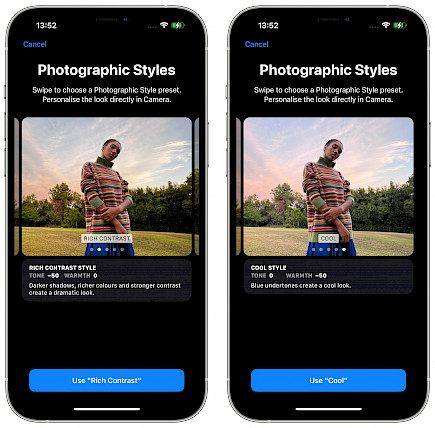
The brand new software and hardware on the iPhone 13 generation enabled another intriguing camera feature: Cinematic Mode. It can automatically focus the camera; however, the phone also records an image of the depth along with the video, which means it is possible to change the focus manually after the actual event. Editing videos of this kind is possible with iMovie and Clips applications.
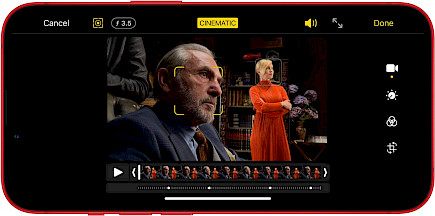
Selfie quality.
Apple has offered two different Field-of-View options on its selfie camera for a couple of generations now - the slightly zoomed-in 7MP crop, which is equivalent to a 30-millimeter field of view, as well as the full 12MP mode, which comes with an equivalent 23mm FoV.
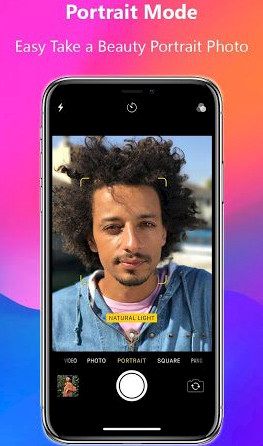
If you hold your iPhone in portrait mode, the selfies will be cropped to 7MP for more precise framing. However, when you turn it horizontally you'll see more of the scene, with the camera app automatically switching to a wider 12MP mode. It is also possible to toggle between these two modes manually. There are switches available on the viewfinder.
The 12MP images taken by the camera on the front are stunning and are among the top selfies we've seen so far. The clarity is amazing, as is the contrast, and the dynamic range is impressive, and the color is amazingly precise. The noise level is very low and well-managed, even in indoor settings, which is something that only a handful of camera selfies can manage.
It is possible to shoot portraits using the front camera since its SL 3D snapper is assisted by the depth map. This is why the subject separation is impressive and the background blur is awe-inspiring. Similar to normal selfies, portrait selfies are superior in every aspect: sharpness, detail, color, contrast, and well-balanced dynamic range.
Winding-up
And that’s all about the new camera module of the iPhone 13.
That’s all for today. Hope you liked the article, we will be back tomorrow with more great reads. Until then, Stay Tuned. Good Day!





